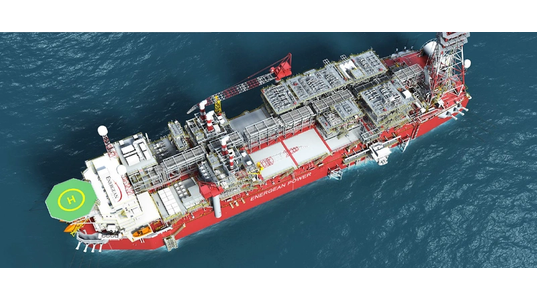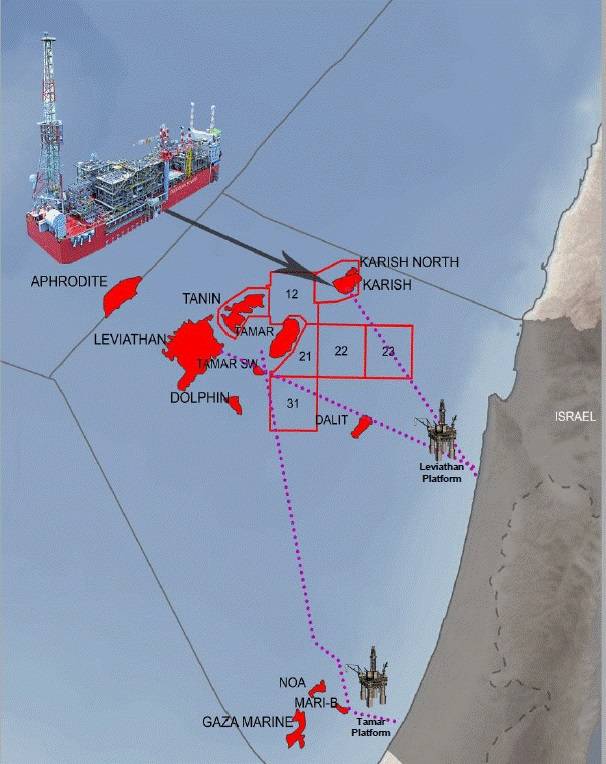
Suppliers hoping to tap the fast-warming Eastern Mediterranean energy market need look no further than the consortia submitting bids on 12 of 19 exploration blocks offshore Israel.
With gas-supply deals in place with Egypt, Jordan, Greece and domestic Israeli producers, hurdles have cleared for Israel’s continued offshore expansion, now in full-swing with the topsides for the giant Leviathan gas field on their way from the Gulf of Mexico. It’s been six years since first gas delivered to the domestic market from the Tamar field, and Israel’s offshore build-up — which stalled pending ironclad policy and government stakes in pipelines — is on-again.
Now, the second offshore licensing round has yielded interest from UK operators, Cairn and Soco International (they of Egyptian oil), together with Israeli company, Ratio (finder of the Leviathan gas giant), and from a second consortium led by Energean, which has just acquired Edison and Israel Opportunity. They join Israel veteran, Noble Energy, with its strong ties to the U.S. Gulf supply chain.
The consortia’s bids increase Israel’s license count from eight to 20. Importantly, it’s the end of the beginning offshore Israel: “The arrival of additional European companies to Israel … will lead to the breakup of the monopoly and enhance competition in this sector,” Energy Minister, Dr. Yuval Steinitz stated about the five international and Israeli companies that submitted proposals to explore 12 new blocks.
The acreage comprises four 400-square-kilometer licenses grouped roughly around geological structures. Immediate seismic is the aim for these focused license groups, known to abut the Shimshon, Mari and Dalit gas fields southwest of Leviathan.
Energean
Acreage in this second licensing round — the first attracted Noble, Energean and an ONGC-led Indian consortium — must be surveyed by 2020 and drilled (in one license zone, at least) by 2024. In effect, the new licensing round alone should yield drillers one well a year (compared to 30 in, say, Norway) for five years (compared to 20 to 30 in, say, Norway).
Keen to replace the coal of its energy mix with gas, every wildcat at Energean’s Karish field is being celebrated in Israel ahead of planned first-gas set for 2021. So, apart from Round 2’s minimum five wells over five years, Karish alone (apart from the recently drilled Karish North) has the Anglo-Greek Energean Group committed to three more wells at the Karish Main field.
The Karish wells are the first drilled offshore Israel since 2013. Egging Energean on are the 1.3 trillion cubic feet said to lie in the Karish reservoir.

Noble Energy
Meanwhile, Noble Energy managers admitted recently that a minor slowdown offshore Israel has resulted in a little less exploration spend. The operator of the Tamar field said this month that capex had been lower-than-expected overall, although things are looking up.
With Leviathan over 80 percent complete — its jacket completed in February; its subsea pipelines, production manifold and topsides due to ship shortly for first gas at year-end — and with Energean’s Karish to ship gas by 2021, it’s the licensing rounds of 2017 to 2019, the (border zone) Aphrodite discovery and the Tamar SW development that’ll fuel future drilling.
Energean — energized by fundraising and its recent acquisition of Edison— is drilling three wells with the Stena DrillMAX drillship at the Karish Main reservoir (just finished a well at Karish North). Energean leadership say they’ll spend up to USD 40 million surveying licenses in Israel in 2019 plus what could be $115 million in actual drilling. The rest — some $535 million — is earmarked for development which has included a lump-sum for TechnipFMC’s EPCIC contract, part of a $1.6 billion capex for use through to 2021.
A Karish FPSO’s hull and topsides will be built by year-end 2019 and integrated next year before sailing form Siemens Singapore and fitting out with risers in 2021. Before that, pipeline installation, onshore commissioning and the installation of some 16 subsea structures will take place during all of 2020.
Meanwhile, pipelines are proposed to take gas to southern (Greek) Cyprus and onward to Greece, and there’s the borderland Aphrodite field. Most of all, however, recent licensing rounds have attracted Egypt oil player, SOCO International, energy-hungry ONGC, Senegal and Norway veteran, Cairn and a newly enlarged, CAPEX-wielding Energean.
The Eastern Med is heating up … even before the drilling Turkey is proposing in disputed waters off Cyprus.



